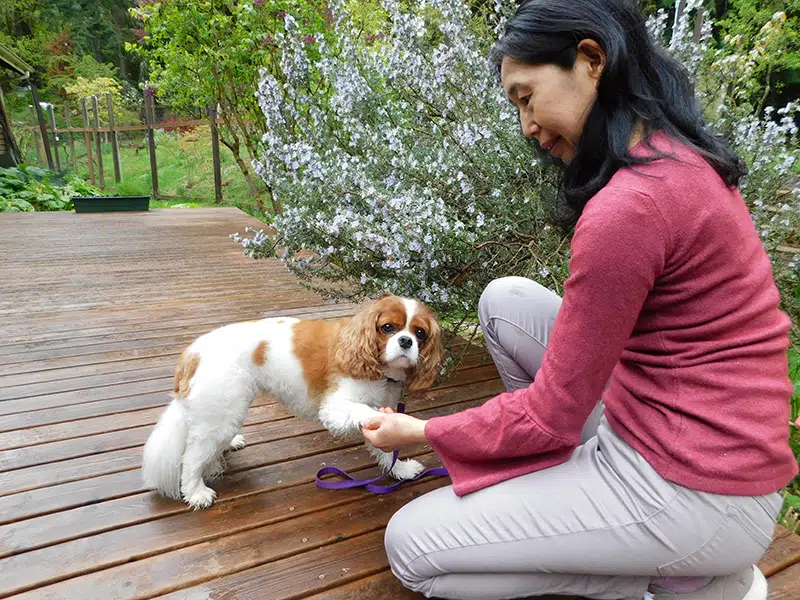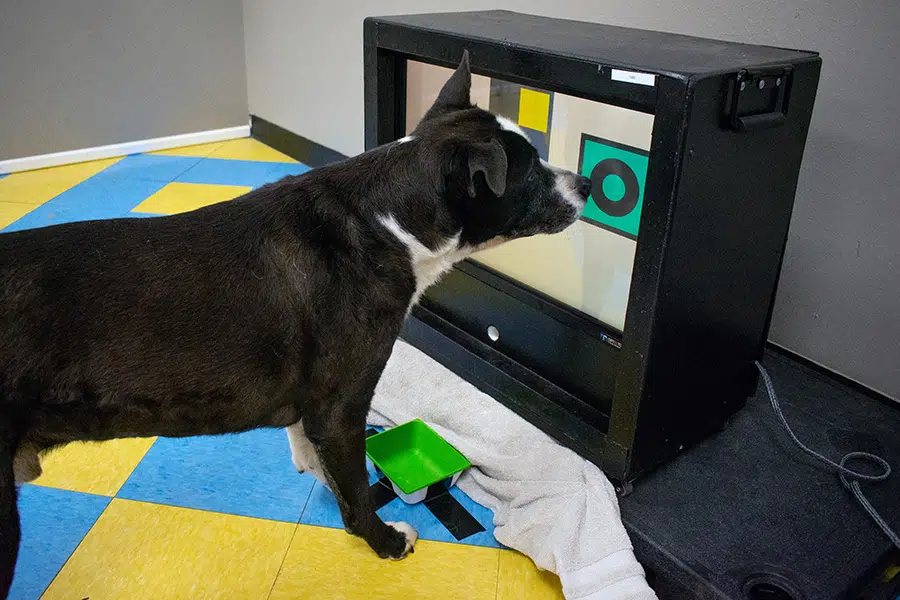Inside the brains of aging dogs

Three-year-old Hana, seen here with her owner Masami Shimizu-Albergine, is one of thousands of pet dogs participating in the Dog Aging Project.
Hana aced her memory test. After viewing the contents of three identical boxes arrayed in an arc on the back deck of her home, the 3-year-old Cavalier King Charles spaniel had to remember which box held a treat — a task she quickly learned after just a few trials.
Hana and her human companion, Masami Shimizu-Albergine of Bainbridge Island, Washington, are helping scientists to learn something too: when dog smarts reach their peak and how they decline with age.
Hana is part of a pack that has grown to nearly 40,000 pet dogs enrolled in a citizen science initiative known as the Dog Aging Project, founded in 2014. Understanding the biology of aging in companion dogs is one of two main goals of the project, says cofounder and codirector Matt Kaeberlein, a pathologist at the University of Washington in Seattle who focuses on aging. “The other is to do something about it.”
Through veterinary records, DNA samples, health questionnaires and cognitive tests like Hana’s treat-finding challenge, the initiative of the University of Washington and Texas A&M University will track many aspects of dogs’ lives over time. Smaller subsets of the dogs, including Hana, will participate in more focused studies and more extensive evaluations. From all of this, scientists hope to spot patterns and find links between lifestyles and health from puppyhood through the golden years.

Pet dog Kai chooses a symbol on a touch screen in a study at the Arizona Canine Cognition Center. The study is designed to test how the cognition and memory of dogs change over time.
The effort joins that of an earlier one: the Family Dog Project, spearheaded in the 1990s at Eötvös Loránd University (ELTE) in Budapest to study “the behavioral and cognitive aspects of the dog-human relationship,” with tens of thousands of canines participating through the decades. The two projects have begun collaborating across continents, and the scientists hope that such a large combined group of dogs can help them tease out genetic and environmental factors that affect how long dogs live, and how much of that time is spent in good health.
With estimates of the number of pet dogs in the world reaching into the hundreds of millions, understanding how they age is important in its own right — to help improve their lives and the care they receive. But following the life journeys of some of these canine companions could provide hints that help people age more healthily as well, including what dogs might reveal about our own aging brains.
Because human aging takes place over many decades, studying the biology of that process is challenging. It means tracking people for 50, 60, 70 years or more, which can be laborious and expensive. In contrast, dogs age quickly. “This sucks for people who love their dogs,” says Kaeberlein, a lifelong dog lover. But it makes dogs an excellent model system for studying aging. (Though dog lifespan is strongly linked to body size, with Bernese mountain dogs averaging seven years and Chihuahuas nearly doubling that at 13 years, broadly speaking a 70-year study in people is roughly equivalent to one dog decade.)